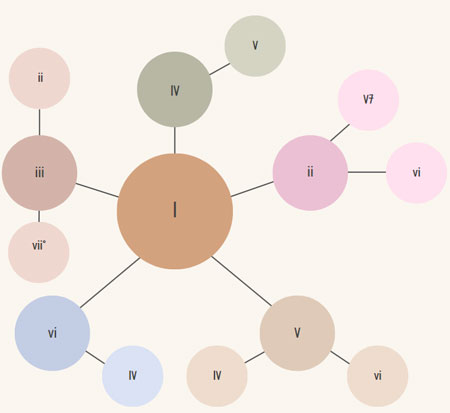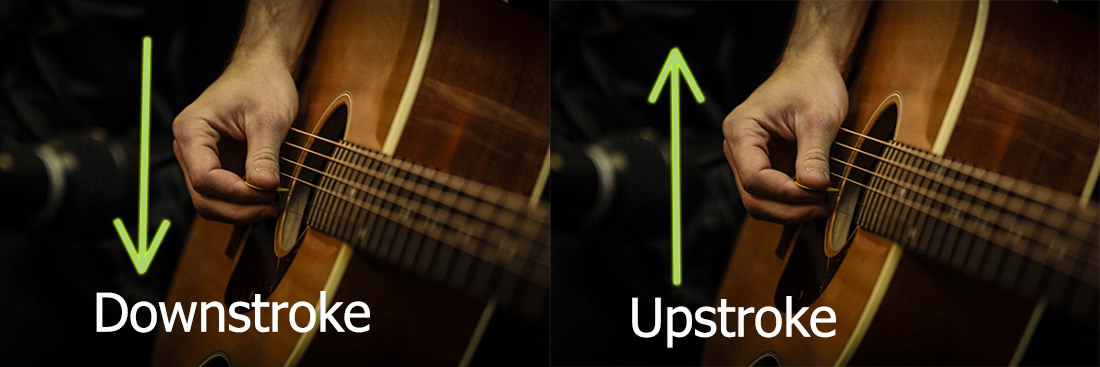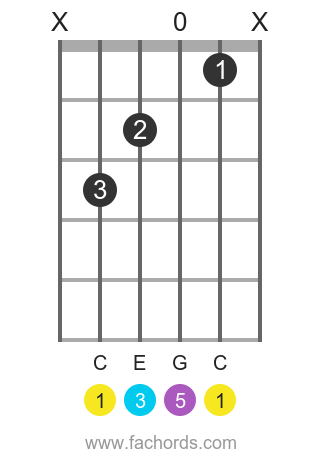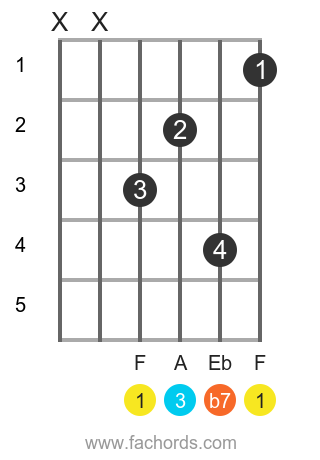Chord Progressions | Guitar Player's Guide
How To Create a Series Of Chords That Sound Great Together
 On your music journey so far you have moved from pitches, to
scales, to
intervals
,
making chords
, and now we come to the next step to include in our
guitar practice routine
:
chord progressions.
On your music journey so far you have moved from pitches, to
scales, to
intervals
,
making chords
, and now we come to the next step to include in our
guitar practice routine
:
chord progressions.
There are certain sequences of chords that just happens to sound very pleasing to human ears.
Most popular music across many genres use specific chord progressions, depending upon which mood they are aiming for in their songs.
Chord progressions are like drum beats and even many bass lines, they cannot be copyrighted and are used by everyone.
It is the melody, the note and style order, that can't be copied by another musician.
The better you get to know all the popular progressions the easier you will be able to recognize them in each song you listen to.
Drill Down: this tutorial will show some of the progressions listed in my ebook: 52 Chord Progression - Learn How To Connect Chords and Create Great Songs.
Chord Progressions - Introduction
There are some progressions that are used so many times that by simply learning one pattern you can play hundreds of songs .
At the end, we will list quite a few, and you should memorize each one.
Many people playing guitar focus on learning scales , which is fine, but you shouldn't neglect your chord progressions. First, we need to learn how to read chord progression charts .
So let's begin!
Some Words About Strumming Chords
DWhen starting out with chord progressions on guitar, don't stress too much about perfecting your strumming patterns right away.
Your strumming style will naturally evolve as you practice. For now, focus on maintaining a steady rhythm.
It's okay to strum open strings between chord changes, this can even add a unique touch to your playing.
Your primary goal should be mastering the chord fingerings and achieving smooth transitions between chords.
Let's try playing a simple song with just one chord: A major. You should already know the fingering for this chord, as shown above on this page.

The song is in 4/4 time, which means the count is 1-2-3-4, 1-2-3-4, and so on.
To develop proper strumming technique from the start, try this:
- On 1, just hit the open A string and let it ring.
- On 2, strum down from the A string.
- On 3, hit the E string and let it ring.
- On 4, strum down from the A string.
- Repeat for every measure.
This technique creates a nice bass line and will significantly improve your sound while helping you develop a good rhythmic strumming style right from the beginning.
Learning to sing along with the song is all about timing. Listen to the song a few times, and you'll get the hang of it.
It's easier than trying to explain time signatures and timing. You'll know when you've got it right. Just keep listening.
Drill Down: Learn 10 strumming patterns to practice daily for great improvement.
A useful chord sequences tool: the Nashville Numbering System
There are many charts out there for a quick reference on each major and minor key.
Some of the charts do not use Roman numerals, instead of the Nashville Numbering System .
This system was invented in the late 50's and often used by Elvis Presley's backup singers The Jordanaires.
You are basically just replacing the Roman numerals with stand Arabic . The symbols also change to denote major , minor , or diminished .
The Nashville number system is used often in real-life scenarios.
When a musician tells the band it is a 1-4-5 song in the key of C, we know the chords are C-F-G .
| Key | 1 | 2 | 3 | 4 | 5 | 6 | 7 |
|---|---|---|---|---|---|---|---|
| C | Dm | Em | Am | Bdim |
If the band leader says it is a 1-5-6-4 in the key of G then we know to play the chords G-D-Em-C .
| Key | 1 | 2 | 3 | 4 | 5 | 6 | 7 |
|---|---|---|---|---|---|---|---|
| G | Am | Bm | F#dim |
Now some of these chords happen to sound good when played in certain orders.
Just as the note C and its fifth G sound good when played in succession so do the chords C major and G major.
Many folk and simple pop tunes are simply the first and fifth chords of the key .
And just as the root, fourth, and fifth are common intervals we get the very popular chord progression of I-IV-V .
In the key of C that gives us C-F-G .
Playing those simple three chords gives you thousands of songs in pop, rock, punk, gospel , lots of music is covered with the 1-4-5!
And then the blues comes along and extends the 1-4-5 to 1-4-1-5-1 or something similar (also adding sevenths).
Pick your guitar up and play C F7 G C :
C Major

F7

G Major

C Major

Repeat the C and F7 a few times back and forth and then end on one G7-C.
If we play the 1-4-5 as 5-4-1 we get many popular classic rock tunes.
Often the chord progression will finish on the tonic, unless you are modulating or moving to another key.
Just as three-chord progressions follow the rules of scales and intervals so do four-chord progressions.
After the I-IV-V progression which chord would also sound pleasant to add?
Of course the vi, the natural minor.
In the key of C that would be the Am.
Now once we add this Am into the other three chords, we get a variety of very popular chord progressions .
With I-V-vi-IV we get the chord progression that covers many songs, just watch.
Change it to I-vi-IV-V and you can play nearly every 50's doo wop tune . Or start with the minor with vi-IV-I-V and you will have nearly every sensitive or sad tune ever written.
Pick a key, any you want and try each of these four chord progressions.
You may perhaps already recognize some songs as you play each one.
Common Chord Progressions
Now we're going to show you a list of the most used chord progressions out there.
Of course there are more, but in reality, humans are often stuck on the same frequency changes over and over .
One of the best bands ever to study chord progressions with are The Beatles .
They were masters of the basic progressions and then they used their talent to modulate, borrow, and substitute to make incredible songs.
They are a great example of how you take the basics that everyone loves, tweak them based on solid music theory and then you can make some great songs .
While there, of course, is experimental music out there that tries to break all the rules , in general, you want to stick with what is popular.
The 1-5-6-4 maybe the best-sounding progression in modern western music , so you can't go wrong using it as a backbone to your song.
Below is a list of the most popular chord progressions, give each one a try in various keys!
(Use this chart to make sure you have the chords right).
Remember these are only the standard foundation , don't forget that often notes are tweaked or changed to sevenths (especially in Blues and Jazz), extended chords, or suspended chords to make a song a little more unique.
You will have to experiment and build on the basics.
You find more chord progressions in the ebook 52 Chord Progressions | Learn How To Connect Chords and Create Great Songs
Basic Rock n' Roll or Pop
I IV V (1 4 5 chord progression) (C F G)
1 4 5 is the most common progression of all, knowing this simple chord stream will allow you to jam with any band as long as you know the key.
Even though this chord progression seems simple there is a variety of ways to tweak it.
Many rock and blues songs use a seventh on the fifth chord, giving the common rock n roll progression of E-A-B7. If you like you can add sevenths all around even. Prince in the song "" Kiss" uses this 1-4-5 in the key of A, A-D-E .
He makes it funky by playing A7-D7-Esus4.
The sus4 uses the A note with the E fitting in the chord progression for the key of A and sounding funky.
There are a ton of substitutions to make these three-chord progression sound unique to each genre.
Classic Rock
V IV I (G F C)
Just as 1-4-5 is very common in rock, the reverse was especially common in many classic pop songs.
This is another progression with simply too many examples to list.
Surf songs , sock hops , rockabilly , 60's rock , anything you want to play with a rocking groove.
You can use variations like E-D or D-A-E, and even E-A-D-A fits well.
Axis of Awesome
I V vi IV (C G Am F)
This progression is named after a band that performs all the songs written in this progression.
Every artist uses this 4 chords sequence , in fact just a quick search and you will be amazed at how many songs follow this pattern!
Doo Wop
I vi IV V (C Am F G)
Really just about every single 50's doo wop tune uses this exact sequence.
Once you can play one song of that era you can play them all. From " Monster mash " to " Earth Angel " and of course " Beauty School Dropout " from Grease.
Folk Songs
I V (C G)
Folk tunes are very simple, often nothing more than the root and fifth repeated over and over .
These songs are sometimes a lot more fun to listen to than play, it can tedious. Often a seventh is used on the V chord.
12-Bar Blues
I IV I V I (C F C G C)
So in the key of E you would have a blues tune go E-A-E-B-E .
Of course, most blues songs use seventh chords so you will want to mix in some.
The blues progressions can vary, but will always focus on the first, fourth, and fifth chords.
As we showed above sometimes you can just repeat the first and fourth for a few measures before bringing tension with a V7 and then back to I.
The number 7 beside a chord denote a Dominant chord , that is a Major chord with a Minor Seventh added.
Rock Ballad
I iii IV V (C Em F G)
Basically, any epic or powerful rock ballad you have ever heard follows this, David Bowie was a fan of this progression.
Without even looking up the chords to Ziggy Stardust we already know how the verse goes, in the key of C it is C-Em-F-G .
La Folia
This is a minor progression and has two possible versions:
i-V7-i-VII (Am E7 Am G)
III-VII-i-V7-i (C G Am E7 Am)
La Folia is one of the oldest progressions existing in modern Western music. Try the key of A minor to get this.
Notice after playing it that it has a medieval or middle ages fantasy type feel to it.
If you are playing music in a castle for royalty this is the chord progression to use.
Even after hundreds of years of use our ears still love this progression.
Flamenco or Andalusian
i-VII-VI-V (Am G F E)
If you want a Spanish-type flamenco style for a classical guitar then try this one out.
So in the key of A minor we would have Am-G-F-E. . The song " Walk Don't Run " by the Ventures follows this one.
Pop Rock Lydian
I II IV I (C D F C)
You will recognize this one from songs like " Eight Days a Week ". And the second here is a major not a minor . So in the key of C, we get C-D-F-C .
For a very long time the II major chord was always followed by the V and then the tonic.
The Beatles instead made it popular to move to the IV instead of the V, giving it a much different resolution sound.
Sensitive Progression
vi IV I V (Am F C G)
This progression is literally known as a sensitive female progression as many pop-rock and indie women artists write songs using it.
Of course, the progression doesn't have to be for that but usually is. Jewel, Avril Lavigne, Joan Osborne , and many more use it. It also works for Boston's " More Than a Feeling " and Iggy Pop's " The Passenger ".
Jazz Standard Progressions
I vi ii V (C Am Dm G)
This and its variations are great for working on tunes like " Heart and Soul ," " Have Yourself a Merry Little Christmas ," and Nilsson's " Without You ".
Of course those songs have sevenths added to each chord.
Jazz Stomp
I VI7 ii IV VII I VI7 ii7 V7 ii V (C A7 Dm F B C A7 Dm7 G7 Dm G)
This was used for many songs in the swing era.
Jazz and Pop Rock 2-5-1
ii V I (Dm G C)
Used in " I'd really Love to See You Tonight " and " It Never Rains in Southern California ".
It is also known as the 2-5-1 turnaround and is a staple of both jazz and rock.
Another progression with a myriad of examples.
You might find useful this ii V I play along backing track.
Ascending Augmented
I I+ I6 I7 (C Caug C6 C7)
An example of this chord progression is C-Caug-C6-C7 . Songs like " You've Got to Accentuate the Positive " and Whitney Houston's " Greatest Love of All ".
The "+" symbol is a way to indicate that the chord has the Fifth raised by one sharp, and it's called augmented chord .
The C6 means C Sixth chord, a major chord with a major sixth .
Ragtime Progression
I VI7 II7 V7 (C A7 D7 G7)
If you're looking for something really obscure, then try some ragtime chord patterns, you never know what it may inspire.
Read Also: Uncommon chord progressions
In a previous post, we've also interviewed 11 guitar experts and asked them their favorite, unusual chord progressions.
We got a great list of strange chord progressions that you can use in your songs. Check it out!
How to expand chord progressions
Now of course, not every song follows a progression to perfection.
Chords can be substituted with 7ths , 9ths , 13ths , min7 , maj , sus2 and 4 , and of course so many more (you might find useful this list of the different chords structures ).
When you are playing a common chord progression it is little changes that can make your song seem unique and stand out .
Along with substituting chords, we can change keys slightly or in a big way depending on what kind of sound we want.
Use Borrowed Chords
By using a borrowed chord in our progression , we are using a chord from another key , but we are not changing the tonic or original key.
Often borrowed chords involve a flattened 3rd and flattened 7th (b3 and b7).
So in the key of C we often use the borrowed chords of Eb and Bb , not moving to far away from normal 3rd and 7th .
This is especially used in rock songs.
Or we can decide to not borrow, and just simply change the key of our song at some point completely, this is known as modulation.
Modulate to other keys
We can modulate chromatically like moving from the key of C to the key of C# .
Or there is also common tone modulation.
Both the key of C and G use the note D thus we can use that note when modulating from C to G .
There is also parallel modulation, as in moving from C major to C minor , still keeping the same tonal center.
There is even a form of modulation called phrase or abrupt modulation.
This is where you just completely change the key after a phrase is finished.
Generally, its best to keep to a somewhat similar key when doing it abruptly.
If we want to, we can also put different forms of modulation together in a chain modulation.
Add Secondary Dominants
Another way to spice up your chord progressions is by using secondary chords, one being secondary dominants.
The first chord of the key is known as the tonic and the fifth is called the dominant .
To find the secondary dominant we can count or use the Circle of Fifths again.
- G is the dominant of the key of C
- D is the dominant in the key of G .
Thus D is the secondary dominant of the key of C.
These secondary dominants are often played as sevenths or higher extensions (9ths, 11ths, 13ths).
The reason they are typically sevenths is that the whole purpose of the secondary dominant is to add tension to the music .
If we go from C-G we can add the secondary dominant and it will now be C-D7-G.
Secondary dominants open up a lot of changes to our chord progressions.
You can even use Extended Dominants
We can also use what is known as the extended dominant.
This is where you resolve down a fifth to another dominant seventh chord.
It seems complicated but it is simply V/V/V. The extended dominant of C is A7 .
There even is a quaternary dominant making it V/V/V/V, and in that case, it would be C and E7.
You will likely not be using borrowed chords that far out, but it is a great practice to test your music theory.
Another interesting strategy is modal chord progression, which uses chords generated from each mode.
Chord Progressions - More Resources And Conclusions
Practice each of these examples, try and use your ears to identify what songs may fit where.
When writing your own music don't forget to substitute often and experiment .
If you try modulating, altering the chords, and changing keys, it is amazing what music you can build.
Now that you know the basics for chord progressions on the guitar you have the foundation to both memorize and create many songs .
There are of course more progressions besides the ones listed. However, in most cases, they are just derivations or slight changes to the examples above.
To stay updated on new tutorials, subscribe to the free newsletter (you'll also get access to the download area with lots of free printable resources)
Here below you find some more resources that will help you advance your chord progressions knowledge:
Borrowed Chords By Examples
Learn borrowed chords (modal interchange) through real song examples. Discover how the Beatles, Radiohead, and Led Zeppelin use unexpected chords, with 23 analy
How To Count Music To Improve As A Rhythm Guitar Player
This tutorial shows you a practical method to count music and help you develop your rhythm guitar player skills
Three Chords Progression | I IV V For Guitar
Learn the three chords progressions (I IV V) in all music keys, the foundation of many popular guitar songs
Secondary Dominants | How To Improve Your Chord Progressions
Secondary dominants are a useful tool to have in your songwriting arsenal. Learn how to use them to make your chord progressions more interesting.
Manage Chord Progression With The Nashville Number System
Learn Nashville Number System, a system for denoting chord progressions in an easy and straightforward way
Tritone Resolution With Guitar Chords Diagrams
Tritone resolution seems an esoteric topic, but it's actually a concept that you probably are already using when playing your guitar.
Modal Interchanges For Guitar Players | Spice Up Your Progressions
Learn how to use modal interchanges to spice up your guitar chord progressions. Find common examples to listen to.
Easy Guitar Riffs: 10 Songs You Must Know
Expand your repertoire with 10 easy guitar riffs. We listed a couple of songs from each age, so you can check how riffs evolved through time
Unusual chords progressions from 11 guitar experts
11 guitar teachers share their favorite and unusual chord progressions. You'll learn new chord sequences that will make your song more interesting.
4+1 tips for learning how to sing while playing guitar
Singing and playing guitar at the same time seems a daunting task. Find 4 advice for learning how to sing and play guitar together (and 1 cheat)
Guitar Strumming Patterns | 10 Easy Guitar Tabs
Discover 10 essential guitar strumming patterns perfect for practicing and playing simple songs. Master the art of combining upstrokes and downstrokes with ease
Time Signature and Meters: a beginner guide
This tutorial will give you an overview of the most common time signatures and how to count measure meters; improve your strumming now
How Many Keys are there? It's not 24!
If you think that there are 24 keys in music, you're wrong. This article explains you why.
How To Find The Key Of A Song: Some Strategies
This tutorial will teach you how to easily find in which key a song is, using several tactics.
Jazz Backing Track with Chord Tones
Here's a jazz backing track with a fretboard that shows chords tones you should use to flow along the music.
Modal Chord Progressions For Guitar Players
Learn how to create cool and original songs using modal chord progressions: Lydian, Mixolydian, Dorian and other modes.
Jazz Progression Workout: Practice The ii-V-I Sequence On Guitar
This tutorial will show you a full workout for internalizing the guitar chords for the ii-V-I jazz progression in the most effective way.
Jazz Chord Progressions For Guitar Players
This article shows you the most common jazz chord progressions (guitar tabs and audio included) to get you started with Jazz.
Blues Guitar Riff | How To Create Your Own Riffs
This video lesson will show you a Blues guitar riff in the style of Lynyrd Skynyrd, and the creative process to create your own blues riffs.
Riff Built On Guitar Triads
This video will show you how to turn a common progression into something more interesting. Modulation to other keys included!
How To Improve Guitar Strumming: Some Tips
Find some tips to improve your guitar strumming skills in the most effective way.
Key Changes In Music: Example Songs
In this article you'll find some key changes that occur in a selection of famous songs.
The vi-IV-I-V Sensitive Female Chord Progression
Discover the emotional depth of the vi-IV-I-V chord progression, also known as the "sensitive female" progression. Learn how this sensitive chord progression, w
What Hemiola Is And How To Create Polyrhythms
Master the complexities of hemiola and polyrhythms with our comprehensive music tutorial. Learn to understand and apply these advanced rhythmic techniques to en
The Right Elbow in Guitar Playing: Some Pointers
Learn how proper right elbow placement enhances comfort and technique for guitar players. Explore tips for classical and electric guitars, posture adjustments,